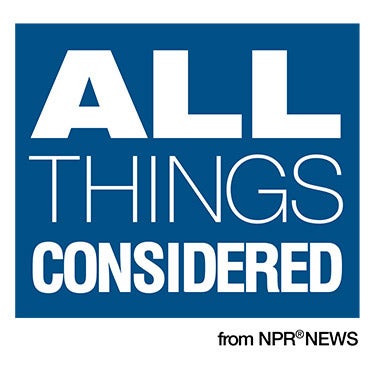The next year of elections may determine if abortion remains legal in Pennsylvania — or how it is banned
Anti-abortion activists face significant hurdles in their efforts to limit reproductive health rights. But accomplishing that is far from impossible.
Listen 1:15
File - A 14-year-old from Paoli carries a sign during an abortion rights rally at the Pennsylvania Convention Center in Philadelphia in 2022. (Emma Lee/WHYY)
What questions do you have about the 2025 elections? What major issues do you want candidates to address? Let us know.
When the United States Supreme Court overturned Roe v. Wade, the 1973 decision that made access to abortion a constitutional right, they left legalization — or prohibition — up to the states. Since then, 19 states have gone on to ban or restrict the procedure earlier in pregnancy than the standard that had been set by Roe.
But not much changed for Pennsylvania residents. Under current state law, abortion is legal up to 24 weeks of pregnancy and longer when the life of the mother is at risk, a standard similar to the tenets set by Roe.
However, elections this year and next November could theoretically change that, and anti-abortion activists appear to have a game plan in place to make it happen.
So, is abortion access at risk in Pennsylvania? That depends on how the elections go, but here is the road map that could be used to make that happen and the obstacles those efforts would face.
The constitutional amendment
There is currently no provision in the Pennsylvania Constitution that legalizes or outright outlaws abortion. The Pennsylvania Supreme Court has ruled that the constitution’s Equal Rights Amendment protects abortion rights, based on principles of equal protection and privacy. Some justices added that they believe the state constitution provides a fundamental right to abortion, though a majority of the court has not yet formally declared this right in every context.
Therefore, one way to ban abortion in the state would be to amend the constitution. The last attempt to do that was initiated by state Rep. Donna Oberlander, R-Clarion, who filed a bill during the 2021-2022 session to amend the constitution to clarify “there is no right to abortion or funding for an abortion.”
However, such an effort “would be very difficult,” according to John Kincaid, a government professor at Lafayette College. An amendment would require passage by a two-thirds majority in each house twice in two consecutive sessions, with an election in between. It would then go to the voters via a referendum question.
But that doesn’t mean the legislature couldn’t still pass a bill that effectively bans abortion, Kincaid said, even if not a complete prohibition.
The legislature
“Really, the opponents of abortion are pushing legislation that would, for example, prohibit abortions after a fetal heart rate is detected,” Kincaid explained.
Pennsylvania Rep. Stephanie Borowicz, R-Clinton, filed such a bill in the last legislative session, similar to laws that passed in Georgia, Florida and South Carolina.
“They’ve proposed another bill to ban abortions if the fetus is diagnosed with Down syndrome,” Kincaid said. “So those are the kind of legislative bills that could significantly restrict abortion access in the state.”
For now, a split legislature virtually guarantees that such laws won’t pass, but elections are coming. The entire Pennsylvania House of Representatives and half of the state Senate will be up for a vote in November 2026.
Republicans already control the state Senate with a 27-to-23 majority, but are only one seat shy of a majority in the House. If Republicans were to win the House while keeping the Senate, they would be able to pass legislation that restricts abortion.
Republicans would need a two-thirds majority vote in both chambers to override a governor’s veto to pass any bill and it’s very unlikely they would have enough, meaning they also need to win the executive branch.
The governor
The current governor, Democrat Josh Shapiro, is staunchly pro-choice, so anti-abortion activists would also need to win the executive branch in addition to the legislature.
“We’re so fortunate here in Pennsylvania to have Gov. Shapiro who promised to protect abortion access and who has delivered on that,” Dr. Karen Feisullin, an obstetrician and gynecologist at Jefferson Health, said at a recent press conference. “But this right is fragile.”
The race for governor has already begun and Republicans have already rallied around a candidate, Stacy Garrity. Garrity, who currently serves as state treasurer, has taken an anti-abortion stance and sold related merchandise on her campaign website.
Last year, Democrats attempted to make abortion a central issue in their attempt to oust her from her statewide seat, but she still won reelection easily. Now that she is running for governor, the merchandise is gone from her latest website, and she recently told a TV news station that she would not support an abortion ban in Pennsylvania.
However, Democrats and pro-choice activists aren’t buying it, especially after Garrity recently campaigned with Louisiana Gov. Jeff Landry, who personally signed legislation outlawing mifepristone and misoprostol, which are commonly used in medication abortions.
“Garrity has already shown us again and again that she is staunchly anti-abortion,” Feisullin said. Louisiana “has one of the most restrictive abortion laws in the country, and [Landry] seeks a criminal prosecution for doctors who provide medication abortion to residents of Louisiana.”
Still, even if Republicans control the executive and legislative branches and pass a bill to ban abortion, it would likely get challenged in the courts, so the first hurdle is in the election next week.
The Pennsylvania Supreme Court
Maria Gallagher, executive director of Pennsylvania Pro-Life Federation, said she has “hope that eventually the situation in Pennsylvania will change” its political leadership and “when that day comes, it will be important to have a state Supreme Court that won’t overrule legislative efforts to restrict abortion.”
Democrats currently hold a 5-to-2 majority on the court, which has already effectively ruled that abortion access is a right under the state constitution.
In that case, Allegheny Reproductive Health v. Pennsylvania Department of Human Services, the court ruled that the state’s ban on Medicaid funding for most abortions likely violates the Pennsylvania Constitution’s Equal Rights Amendment. The justices said denying coverage for abortion while funding other medical procedures for men and women alike amounts to unequal treatment “because of sex” under the state constitution.
Greer Donley, a law professor at the University of Pittsburgh, explained that although the majority didn’t declare a fundamental right to abortion, their ruling “provides a really, really high standard that the state is going to have to meet anytime it wants to justify abortion restrictions.”
That decision was written by one of the justices up for reelection this year, Justice Christine Donahue.
Donahue and two other justices, David Wecht and Kevin Dougherty, are up for retention votes in which voters simply choose whether they stay on the court for another 10-year term. Should voters choose to remove the three justices, that would be enough to stymie the court from shooting down an abortion ban or, for that matter, any other abortion restrictions.
“Pennsylvania has a lot of abortion regulations on the books right now that many people might be surprised by and uncomfortable with,” Donley said. “The ruling that they made in that Allegheny case provides a really great standard for litigators to potentially come in and challenge a lot of those rules as unconstitutional rules, for instance, that require a 24-hour waiting period, that force minors to get a court to approve their abortion when they can’t get their parents to consent and things like that.”
So what are the chances of all that happening?
The hurdles for anti-abortion activists are significant. The first, and probably most challenging test is unseating three sitting justices from the Supreme Court. That would be an unprecedented feat. In the history of Pennsylvania, only one justice has ever lost a retention vote.
However, also unprecedented is the amount of money and attention focused on the election this year, a level of interest that could be indicative of the high hopes Republicans appear to have and reflective of a national strategy targeting courts.
Democrats have not sat idly by, however, and even the Democratic National Convention, in another unprecedented move, has gotten involved to the tune of hundreds of thousands of dollars spent on ads and other campaign tactics.
“We’re not going to roll over on this,” DNC Chair Ken Martin said. “The DNC is all hands on deck.”
According to the latest polling, the anti-retention efforts have the higher hill to climb. A Franklin and Marshall College poll shows the justices with leads between 10 and 17 percentage points among likely voters.
The legislature may be more within striking distance. Out of 25 state Senate districts where elections will be held next year, 13 of them are held by Democrats and 12 are held by Republicans. Control over that body, therefore, is not very likely to change next year, leaving it within GOP hands.
While Democrats hold a majority in the state House of Representatives, it’s by a much slimmer margin, 102 to 101. There are likely to be two or three dozen competitive races, some of which are currently held by Democrats and could be picked up by Republicans.
That leaves the executive branch. Shapiro is very popular in the state. The latest Quinnipiac University poll gives him an approval rating of 60%. However, the Franklin & Marshall College poll muddies the data, as it states that 51% of all voters surveyed believe Shapiro is doing an “excellent” or “good” job, while 40% said he’s doing either a “fair” or “poor” job.
While Shapiro sees favorable polling numbers, Garrity is also very popular. Garrity won reelection last year with nearly 3.5 million votes, a record for any office in Pennsylvania election history. But the Quinnipiac poll released earlier this month said she would lose to Shapiro, 39% to 55%.
“I think Shapiro has a good chance of being reelected, but when that term ends, then you’re looking at the possibility of a Republican becoming governor,” Kincaid said. “Everybody’s thinking about this in the long term, not the short term. So if the legislature and the governorship flip over to the Republicans, the Democrats are seeing the state Supreme Court as their last bastion of defense.”

Get daily updates from WHYY News!
WHYY is your source for fact-based, in-depth journalism and information. As a nonprofit organization, we rely on financial support from readers like you. Please give today.








